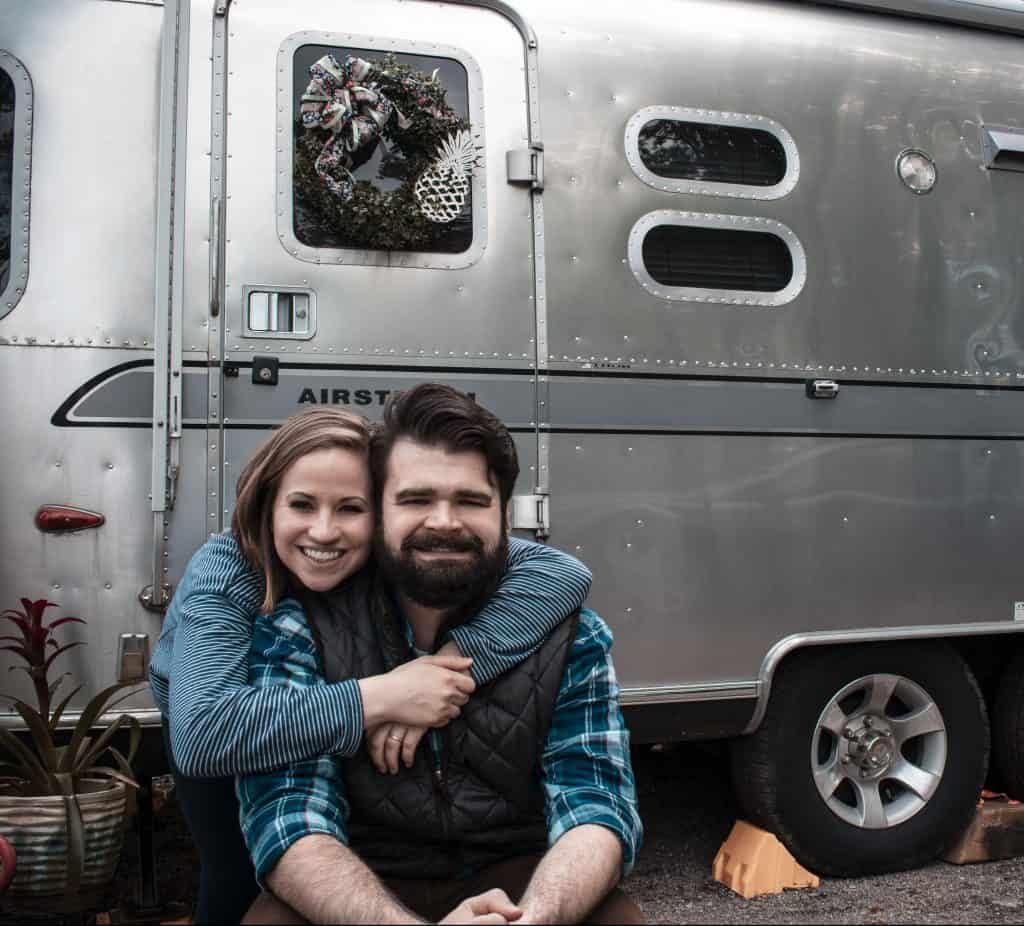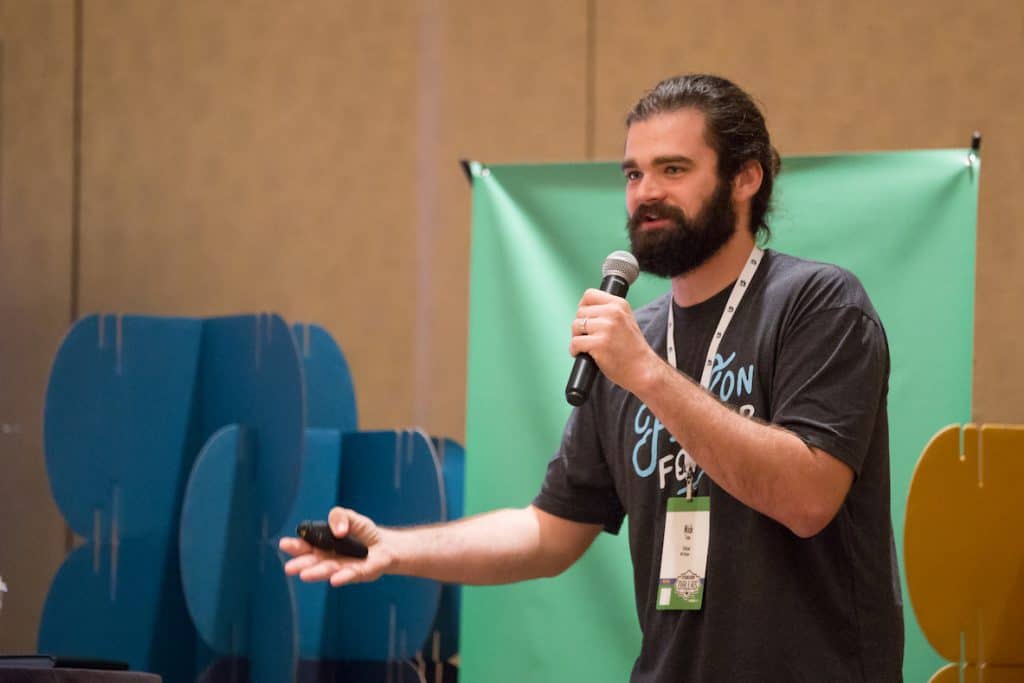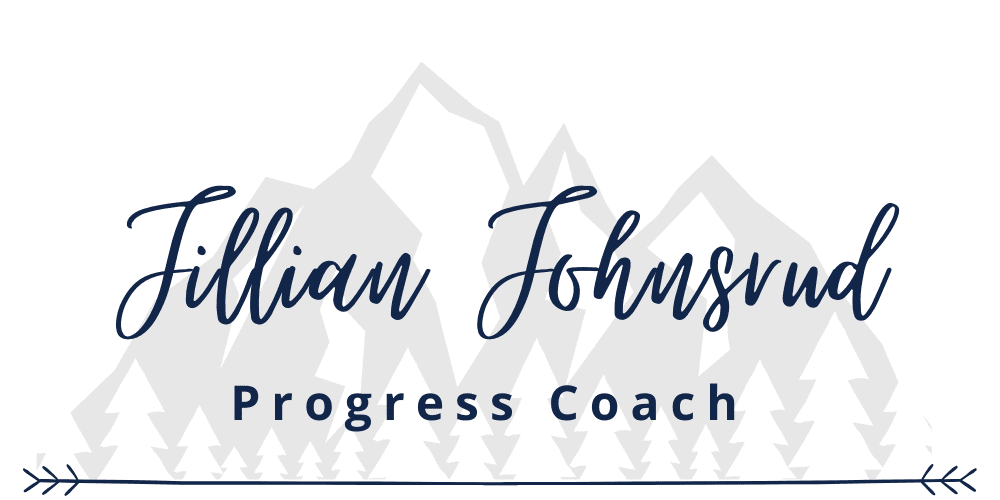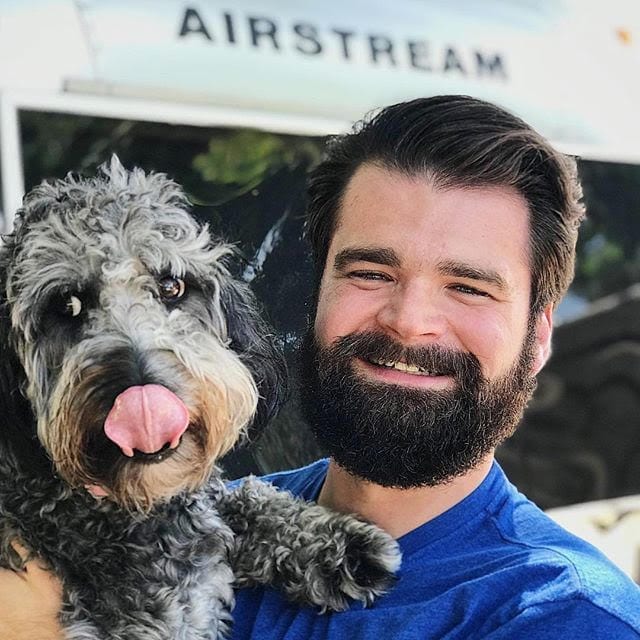I’m SO excited to share this guest post with you! 10 years ago I had zero idea this was even possible. To be able to do work your good at and love WHILE being able to travel full time? 5 years ago it would have seemed overwhelming and intimidating. Nick nailed this! It’s everything I teach and 100% believe. He created the best possible guide for you to get started. If you are a long ways off from financial independence like Nick, or just want to start a cool project for your second act, this is for you! Plus he put together a printable to organize all your work with and FAQ. The ones that really stump people. Get it here.
In mid-2015 I found myself in quite a pickle. I hated my job and couldn’t stomach the idea of working a full career there. I came across the concept of FIRE, but even the idea of working that job for 8 – 15 more years seemed unbearable.
Luckily, I found another way. Two short years later I was able to quit my job. My wife and I hit the road to travel full time in our Airstream and work remotely. Although I’d never heard the term flexible FIRE until I met Jillian, that’s exactly what Hanna and I were going after.
Through a combination of learning new skills, building relationships, and working as a team with Hanna, we were able to transition from jobs we hated to work we love. We hit some of our biggest goals in less than three years rather than waiting 15+ years to get there.
We’re not even close to financial independence yet. But we do have our income covered through work we’re passionate about.
Before We Jump In
Read this article from Jillian about Passive + Passion income. It’s the basis for my entire article, and I’ll be using a lot of terminologies that she introduces there.
Read it? K. Good.
Let’s go.
What Freelance Work and Traveling the US Looks Like
 Over the past three years, we’ve transitioned from our traditional jobs providing 100% of our income (fixed+comfort+cushion) to 100% Passion income with 0% Passive. In addition to no passive income, we’re currently in the full-time freelancer stage with the long-term goal of making it to full-time entrepreneur + passive income stage.
Over the past three years, we’ve transitioned from our traditional jobs providing 100% of our income (fixed+comfort+cushion) to 100% Passion income with 0% Passive. In addition to no passive income, we’re currently in the full-time freelancer stage with the long-term goal of making it to full-time entrepreneur + passive income stage.
We looked at our life and decided we want to travel full-time and do work we love sooner rather than later. So we neglected to build out passive income streams for the time being. We opted, instead, to increase our skill set so that we could get paid to work remotely for bosses we love doing projects we believe in.
These days we spend the vast majority of our week doing freelance work for two clients in fields we love. And the best part is these jobs allow us to travel full-time. Now that we’re here, we’re refocusing on our passive income streams. This includes growing our own business, stock market investing, and eventually real estate.
Now that you know what we did, I want to show you how we did it. More importantly, I want to give you a roadmap to follow so that you can do it too.
Roadmap to Replacing Your Day Job with Freelance Work
I’ve identified five steps to replace your day job with freelance work:
- Identify the industry you want to be in or the people you want to work with
- Clarify the structure of your ideal day/ week
- Make a timeline
- Map out a strategy
- Repeat and optimize
Let’s jump in 🙂
(Because this is a massive guide Nick created a free pdf guide. Get it here.)
1. Identify the industry you want to be in or the people you want to work with
Before you can start freelancing, you have to figure out what type of work interests you. At the very least, you need to identify the types of people/companies/brands you want to work with.
To do this, make a list of your dream freelance gigs. Even if you don’t end up working directly with any of the people/companies on this list, it will give you a clear picture of the qualities you want your freelance employers to display.
For me, the long-term goal has been to build a business helping young people manage their money so they can get on with living their adventure. I want to do that primarily online via a blog and courses. So it makes sense for me to do freelance work in that same industry.
Here’s what my list looked like:
- Fizzle
- Discover Bank
- Ramit Sethi (IWT)
- Ally Bank
- Seth Godin
- YNAB
- Grant Baldwin (Speaker Lab)
- Bryan Harris (VideoFruit)
- Pat Flynn (Smart Passive Income)
- Amy Porterfield
- FinCon
- Bigger Pockets
- Seva (Convertkit)
- Student Loan Hero
- CFSI
- Personal Capital
- Go Banking Rates
- Rockstar Finance
2. Clarify the structure of your ideal day/week
Do you want to work part time, full time, or project based? Some freelancers work with clients on an on-going basis for large or small amounts of hours. Other freelancers only work with clients on specific projects and then part ways to find new clients. There are plenty of options when it comes to freelance work. You just need to know what you want.
Here are a few other questions you need to answer before you start applying for freelance jobs:
Q: How many clients do I want?
Q: How much money do I need to exit my day job?
Q: How flexible does my schedule need to be?
Q: How often do I want to travel for work?
Before you start reaching out to potential clients, you need to be clear on what type of clients you want and how you want your time to be structured.
Remember, you’re likely doing this because you don’t like your current job situation. It doesn’t make sense to replace your current job with freelance work you don’t like either.
There’s a balance, though. You probably won’t start out doing the work you love. Just make sure you’re clear on the long-term goal so that you can easily tell if a specific gig will help move the needle in the right direction.
3. Make a realistic timeline
I’m a huge fan of Michael Hyatt’s goal setting system. He’s taken the well-known SMART acronym and switched it up slightly to make SMART-ER.
He says that you should set goals that are:
Specific
Measurable
Actionable
Realistic
Time-keyed
Exciting
Relevant
That time-keyed part is essential here. I knew I wanted to replace my income with freelance work that I was passionate about. And my goal was to do this by the time my wife graduated from Physical Therapy school.
Hanna had two years left of school when I started freelancing. We planned to hit the road fulltime shortly after she finished, with her working as a travel physical therapist. That meant I had two years to figure something out.
And there’s nothing like a deadline to motivate you. While I still hadn’t replaced my full-time income by then, I had enough coming in that we felt comfortable making the leap. Plus, we had Hanna’s income to lean on while I built up the freelancing business.
It took an additional eight months after I began freelancing full-time to feel secure in Hanna leaving her physical therapy job. Now we are continually setting new time-keyed goals to increase our income through freelancing and passive strategies.

4. Map out your strategy
Notice we’re on step four, and I haven’t yet mentioned anything about the actual work you’ll be doing. That’s because the first three steps are critical. When it comes to transitioning to freelance work (or anything in life), success is in the planning.
But now you’re finally ready to get into the strategic details of making this happen. Your strategy will vary from mine, but there’s a handful of core elements you’ll need to be successful.
Identify the skills people pay for
One of the biggest problems I see with new freelancers is trying to get paid for services that people aren’t already paying for. Spend some time researching in FB groups, job forums, craigslist, and Google. You specifically want to look for job descriptions listed. Sign up for all of your dream freelance clients’ email lists from Step 1. You’ll be surprised how many of them will send out emails when they’re hiring. If nothing else, you’ll learn what types of skills they pay for.
Then, make another list! (I love lists)
Keep track of all the possible skills and job titles you see that folks are paying for. Here are a few of the skills the people I mentioned above pay for:
- Customer Support
- Website Design
- Writing
- Editing
- Social Media Management
- Video Editing
- Podcast Editing
- Digital Marketing
- Digital Advertising
- Landing Page Optimization
- Tech Support
- Funnel and Marketing Implementation
- Sales Calls
- Virtual Assistant Work
Okay, now that you know what people pay for, you need to figure out what you can provide.
Identify your greatest strengths and how they fit into the skills above
It’s important to recognize that you don’t need to have these skills just yet. You just need to understand what people pay for and what you can learn. In the past three years, I’ve been paid to write, manage social media, build marketing funnels, optimize landing pages, build websites, edit videos, and integrate software tools.
 I literally had no training in any of those things before three years ago. It can all be learned if you’re willing to put in the effort.
I literally had no training in any of those things before three years ago. It can all be learned if you’re willing to put in the effort.
Okay, it’s time for… you guessed it, another list!
This time, write down all of your strengths and skills you currently have. If you’re not sure what your strengths are, I highly recommend reading Strengths Finder and also taking a few personality tests (my favorite is the Enneagram).
Here are the strengths I identified that somewhat related to the skills people pay for:
- Analytically minded
- Tech-minded
- Teaching and tutoring background
- Willing to learn and try anything
My very first freelance client was a Financial Advisor who hired me to write four articles about investing and build a few website pages. While I’m not the best writer in the world, I knew how to explain investment terms in a way that people understand. And although I had never built websites before, I was great at learning from YouTube videos. And on top of that, I was just determined to figure it out.
The point here is that what you do at your current day job doesn’t have to correlate with what you want to do as a freelancer. I was a mechanical engineer by day and a writer and digital marketer by night.
(Because this is a massive guide Nick created a free pdf guide. Get it here.)
Show your skill set
Now that you’ve identified what you want to get paid to do, you’ve got to prove you can actually do it.
For me, this meant starting a blog of my own and using it as a sort of online resume. I wrote in-depth articles about personal finance and investing. I also built the website myself and applied some basic digital marketing principles to put it together.
When I started pitching website owners, I was able to point to my site as a real example of my skillset.
Regardless of the work you perform, you’ll need to find a way to showcase what you can do. This is especially important if your desired freelance work doesn’t fit your current traditional resume. The good news is, there are plenty of outlets for you to publish your work.

Find your first gig
At this point, you’ve identified the people you want to work for, the type of work you want to do, and how to showcase your skills. You’re finally ready to find that first gig.
It’s so easy to feel overwhelmed here. You’ve probably got a million questions running through your head – Where do you look? How do you meet people? Are you even good enough to charge at this point?
I’m a huge fan of asking lots of questions. In fact, you’re likely trying to become a freelancer in the first place because you’re questioning traditional employment. I have a whole video about questions!
In my experience, there are three great ways to find gigs.
- Job boards/ Craigslist/ Email list responses
- Offering free services at first
- Word of mouth from friendships you make
I got my first gig from pitching on a Problogger job board. I don’t have time to get into it here, but if you Google “how to pitch (insert service here),” you’ll find a million articles that teach you how to craft a great email pitch. Pitching this way is difficult, and it’s largely a numbers game. You may be one of the hundreds of people pitching for a single position. That’s why options 2 and 3 are much more reliable.
While most people don’t want to offer free services, it’s one of the best ways to get started. Reaching out to people you want to work with and offering to help them for free is the best way to get your foot in the door. For example, David Rock pitched Gary Vee on creating a few free videos for him on YouTube. He then proceeded to knock those videos out of the park and legitimately ask for nothing in return. Gary loved the videos so much he offered David a full-time job creating YouTube videos for his team.
Best case scenario, Gary Vee hires you. But a much more likely scenario is you do good work for someone and end up with an incredible testimonial that you can use when you start pitching paid work.

Build real relationships that will level up your freelancing
Word of mouth is by far the best possible way to get the positions you want the most. But building real relationships is difficult. In fact, relationship building warrants an entire article on its own. But let me add a few key points that will point you in the right direction.
When it comes to meeting people, the best possible place is in person at live events and conferences. If you can’t do that, the second best place is online video chats and skype rooms. If you can’t start there, then join FB groups centered around your topic, reply to email newsletters, and engage with people on Twitter or their websites.
Jillian did a fantastic job of engaging with people on social media and then Skyping with them to chat about business/blogging and how she could help them. She did this so well that when she went to FinCon for the first time, it was like she’d been going for years. Everyone knew her, and she was able to deepen relationships that she had initiated during the months leading up to the conference.
Real relationship building essentials
- Actually care about them
If you’re immediately thinking about how this relationship will benefit you in the future as soon as you meet them, you’re never going to get anywhere. You need to develop a genuine curiosity in other people and their lives. Then you need to think about how you can help them with absolutely no expectation of anything in return. - Cultivate those relationships like a garden
Don’t think one or two interactions will result in you being best friends for life. You need to interact with people regularly, check in, work together, brainstorm, go out, and keep up. I use a simple Google sheet to keep track of the people I want to maintain a relationship with, and I make sure I’m engaging with them at least once every quarter. - Remove the term “networking” from your vocabulary
Networking has unfortunately become associated with a “what’s in this for me?” mentality. I want you to start thinking about building friendships without expectations. Look to make friends with people who are doing similar things, have similar goals, and who you genuinely like. When you do this, you’ll be amazed at how random things start to happen that bring more work your way than you can handle.
If you’re interested in learning more about building authentic relationships, I recommend starting with Dale Carnegie’s How to Win Friends and Influence People.

5. Optimize and Repeat
By now you’ve got one or two gigs under your belt. You’re well on your way to making a real go of this freelance thing. The next step is to optimize and repeat the strategy above.
Specifically, I want you double down on your strengths, double down on your relationships, and learn as much as possible.
It’s important to note that it took me eight months to land that first gig. I was deep in education mode for months on end. If you’re like me and you don’t have the skillset you’re trying to get paid for, the only way to do it is through self-education.
But the education doesn’t stop once you start landing gigs. I would argue that education should never stop. I’m always reading and listening to the latest information in my industry to stay on top of what’s going on and what I need to know.
A bonus to always trying to learn more is that I continually identify and hone what I’m best at. Over the past six months, I’ve gone from six clients down to two and completely stopped freelance personal finance writing. Today, I do very specific digital marketing work for these two companies, and that’s it.
Why?
Because that’s the type of work, I’m best at. It’s the type of work I can get paid the most to do. And it’s the work I truly love. So it’s a win for me and a win for my clients.
As you do more and more freelance work, you’ll want to start niching down even further if you’re serious about getting paid more. By becoming known as the go-to person for xyz service, you’ll be able to increase your rates over time while simultaneously increasing referrals. And it’s all because you’re doing your best work.
Bio

Nick is a married twenty-something financial YouTuber and blogger at mappedoutmoney.com He travels full-time with his wife, Hanna, and four pets. He writes and speaks about personal finance and budgeting for young professionals. Nick created a free worksheet to help walk you through each of the steps in this article. Get it here.



This is so fun! I love the idea of full-time traveling. 🙂 It’s scary, but I’m planning to do freelancing full-time by January. Our student loans will be paid off (hallelujah!) and we’ll have the stability to make it happen. I am SO excited and nervous. I was just mapping out locations where I can work remotely from. Alaska, anyone? 🙂
That’s so awesome Mrs. Picky Pincher! Alaska is on our list too! I actually have a buddy in the Airforce who’s living there right now and we’ve been trying to figure out a good time for us to make the trek. You should check out “Less Junk More Journey” on YouTube. They’re currently in Alaska 🙂
But thanks for reading, glad you enjoyed it!
Thanks so much Jillian for having me write this post! I’m honored to be able to share with your community. This was a lot of fun to put together 🙂
Great tips! Perfecting timing as I’m looking into freelancing to supplement my mini-retirement savings. Thanks for this!
Good to hear! Glad it was helpful for you 🙂 Freelancing to help supplement your mini-retirement savings is the perfect place for it. You’re totally on the right track there my man.
I’d be interested in your take on the question of health insurance. I’d love to be self employed, but the thing that holds me back is health insurance. I know every state is different, but even with Obamacare/Affordable Care Act, I have access to health insurance on the exchange…but I have found that the majority of health care providers don’t accept it in my state, so it’s not very useful where I live. Otherwise, I love the idea of freelancing/self employment/flexible FIRE.
Great article though, and glad it’s working for you!!!
Nice website update, Jillian! 🙂
Hey Lindsay! great question.
So, in full honesty, we have a pretty lucky situation right now for Health Ins. For me: I’m just 25, so under the new rules I can stay on my parents until I’m 26. My mom has a nice government healthcare plan that doesn’t cost anything extra for me to be one it. So that’s mine.
For Hanna, we recently joined Medishare. It’s a Christian health-sharing service that works really well for us.
I’m not sure what Jillian does, but I know a lot of our friends (including both of my clients) use Medishare.
The upside, is it’s super affordable, covers a ton of stuff, and counts as “insurance” under the AHCA.
The downside, is that if you have pre-existing conditions, they can discriminate, not let you in, or hike up your premiums… But that’s how they keep in inexpensive for people like Hanna and I who don’t.
After my 26th birthday next year, I’ll be joining Hanna on our Medishare plan.
Also, it should be noted that most of the organizations like this do have certain religious values. So you have to weigh that in your decision. For instance, they won’t cover your medical injuries if you were drinking and driving and got into a wreck.
So that’s what we do. I know it won’t work for everyone. And I totally understand health insurance one of the scariest parts. I know it was for us and it’s something we’re going to continue saving for as a separate emergency fund as we age.
Hope that helps!
Nick